If Tribeca’s Walls Could Talk
The History of Tribeca Buildings database—compiled from Tom Miller’s posts at Daytonian in Manhattan—has six more entries on the properties below. (Click the address to read the full text.) If you enjoy these, and you will, then you should definitely check out his website, which also has write-ups about buildings all over the island. And don’t miss his book, Seeking New York: The Stories Behind the Historic Architecture of Manhattan—One Building at a Time.
··················
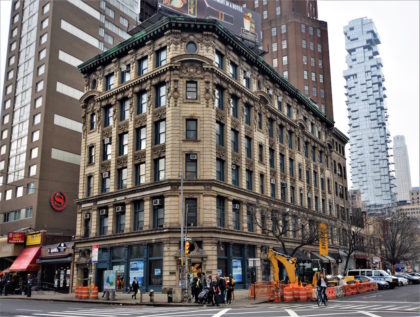 285 W. BROADWAY
285 W. BROADWAY
By the early 1940s, Henry C. Roberts had opened Roberts Art Gallery and bookstore on the ground floor. Beside art, the colorful Roberts was interested in otherworldly things. He sometimes gave lectures on the 16th-century seer Nostradamus and once explained, “My aim in life is to help people help themselves by developing their psychic powers. I’ve got extra-sensory perception developed to a very high degree. I found these powers through studying Nostradamus. Some people say I am Nostradamus Redivivus, which means Nostradamus revived.” In 1947 he published The Complete Prophecies of Nostradamus. Roberts’s unusual personality drew a reporter from The Times to his shop in 1949: “In the dimmest corner of an age-haunted room Mr. Roberts sat at a battered desk, doddling with a quill pen. The grudging glow of a brass lamp picked out a bronze skull on the desk.” Roberts pointed to a hanging planter of ivy and said, “I can look at that bowl and see things.” His wife was less impressed than was the reporter. “See if you see a steak. You didn’t eat all day,” she retorted. (Also: Because the Rawitser Building sits outside the Tribeca Historic District, owners or tenants have no restrictions on altering the building and potentially vandalizing Brunner & Tryon’s striking 1897 building.)
··················
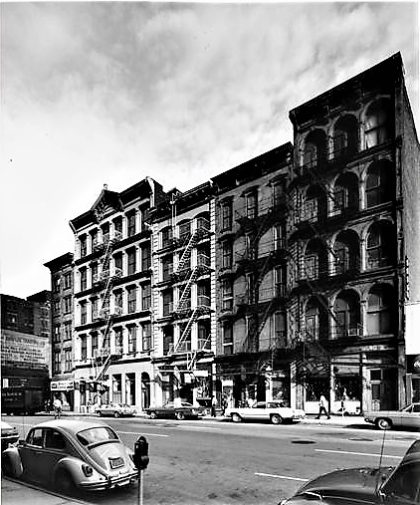 315 CHURCH
315 CHURCH
Turn-of-the-century factory work was often grueling. Besides Charles Robinson’s shirt waist factory, other employers in the building at the time were New York Millinery & Supply Co., whose three men and two women worked 53 hours per week; and the Novelty Skirt Co., which employed 10 men and one woman. Their week was slightly longer at 54 hours. Cloak makers Edelson & Shipiro occupied space by 1904. The following year 50 of its employees, members of the United Garment Workers of America, went on strike. When another manufacturer, Max Lacher on Canal Street, helped out by filling some of its orders “while it is in a crippled condition,” as described by The New York Times, the strikers became enraged. Early 20th-century labor disputes often became violent, and on July 20, all 50 strikers stormed the Lacher factory. The mob was too large for the sole policeman on the beat to handle, and reinforcements from the Leonard Street Station were called in.
··················
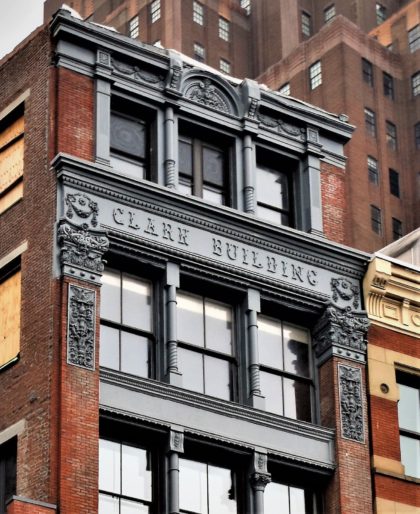 332 CANAL
332 CANAL
Cross Siclare and his brother, Nathan Siclare, used all of the building for their extensive paper cutting operation except the top floor, which was leased to Malis-Powers Supply Co. In 1923, however, they took over that floor for a side business which quite possibly made even more money for the pair. On Tuesday afternoon, December 4, 1923, John Kerrigan met with Cross Siclare regarding the prospective purchase of paper stock. Saying he was in a hurry to finish things up, Kerrigan confided to Siclare that he had an appointment to meet a man who could sell him alcohol. Siclare’s attention was sparked and he pressed Kerrigan for more information. It turned out that Kerrigan was not interested in buying a bottle of scotch or gin for his own consumption, but wanted 500 gallons. Siclare said could provide that amount of good alcohol. Kerrigan wavered, then “he agreed to consider the offer if Siclare would furnish a 5-gallon sample,” according to The New York Times two days later. Cross Siclare provided the sample and Kerrigan left. But when he returned the following day he was not alone. John Kerrigan was an undercover Prohibition Agent who had originally come to No. 332 Canal Street on a tip. What the raid uncovered was staggering. The Times reported on the “seizure of fifteen stills and $50,000 worth of alcohol.” Both of the Siclare brothers and their shipping clerk, Edward A. Dorney, were arrested. The article revealed that the entire top floor was set aside “for distilling the denatured alcohol.”
··················
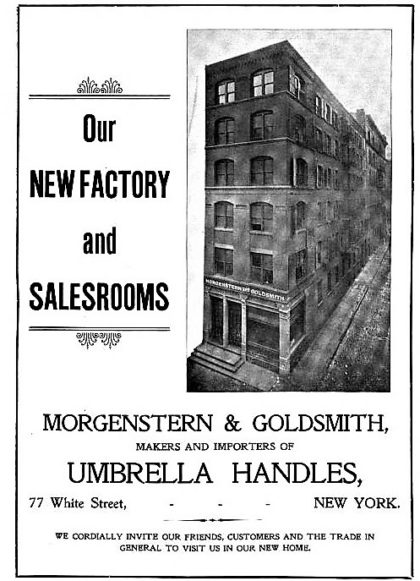 77 WHITE
77 WHITE
Upon its completion in 1888, the building was leased to Sweeter, Pembrook & Co., dry goods merchants. The firm was no doubt highly disheartened when Mayor Hugh J. Grant shot down its request to erect a bridge between No. 77 White Street and No. 378 Broadway shortly after moving in. Although the Board of Aldermen approved the request on October 15, 1889, the Mayor vetoed it two weeks later. His October 29 letter to the Board said in part, “The street over which it is proposed to build the bridge is already narrow and dark, and a structure of the kind proposed by the resolution would not fail to render it more so.”
··················
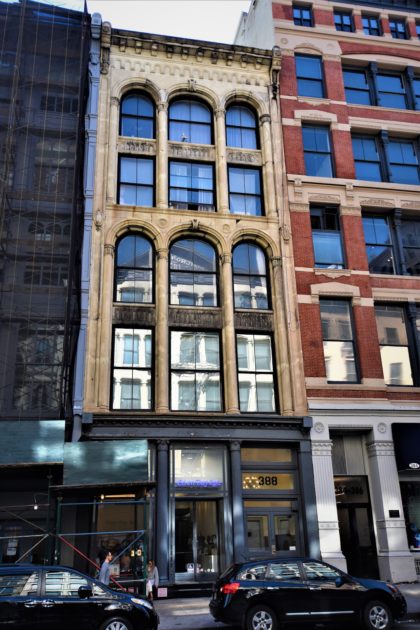 388 BROADWAY
388 BROADWAY
By 1979, the Theater for Bodies and Voices had opened. Run by choreographer and modern dance instructor Beverly Brown along with Roger Tolle, the venue not only offered classes, but staged productions. Brown’s Danensemble performed here as well as throughout the country. On January 15, 1979, for instance, Alan M. Kriegsman of the Washington Post reported, “The Beverly Brown Dancensemble: Theater [sic] for Bodies and Voices made its Washington debut at the Marvin Theater last night in a program that was fascinating in concept, elegant in its plastic contours, often beguiling, and withal somewhat wispy in emotional impact. As the group’s name suggests, the dancers utter sounds as they move—chanted vocalizations and non-verbal syllables.” The Theatre for Bodies and Voices would remain until 1991 when a conversion of the upper floors to residential space began.
··················
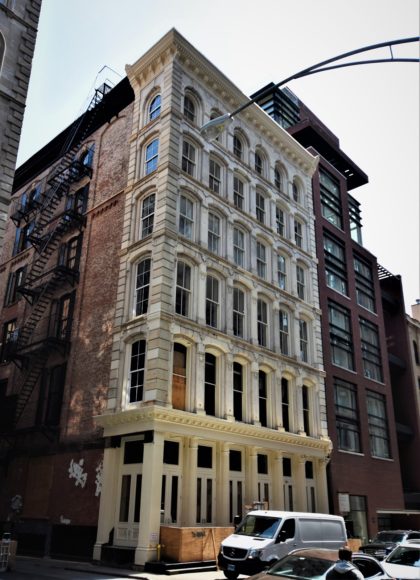 80-82 WHITE
80-82 WHITE
In 1913, Jenkins Bros. leased the entire building. Makers of plumbing valves, the firm was nationally recognized. Their main plant was located in Bridgeport, Connecticut. The dependability and quality of the Jenkins projects was best evidenced when the firm was contracted to produce the valves for United States naval ships during World War II. Following a worker walk-out in 1944, an Executive Order from the White House directed “that all employees were instructed to report for work immediately.” The Government went a step further. On April 13 that year, an order from the War Department read, “Sec. of the Navy authorized to take possession of and operate the plants and facilities of Jenkins Bros, Inc.”
··················













